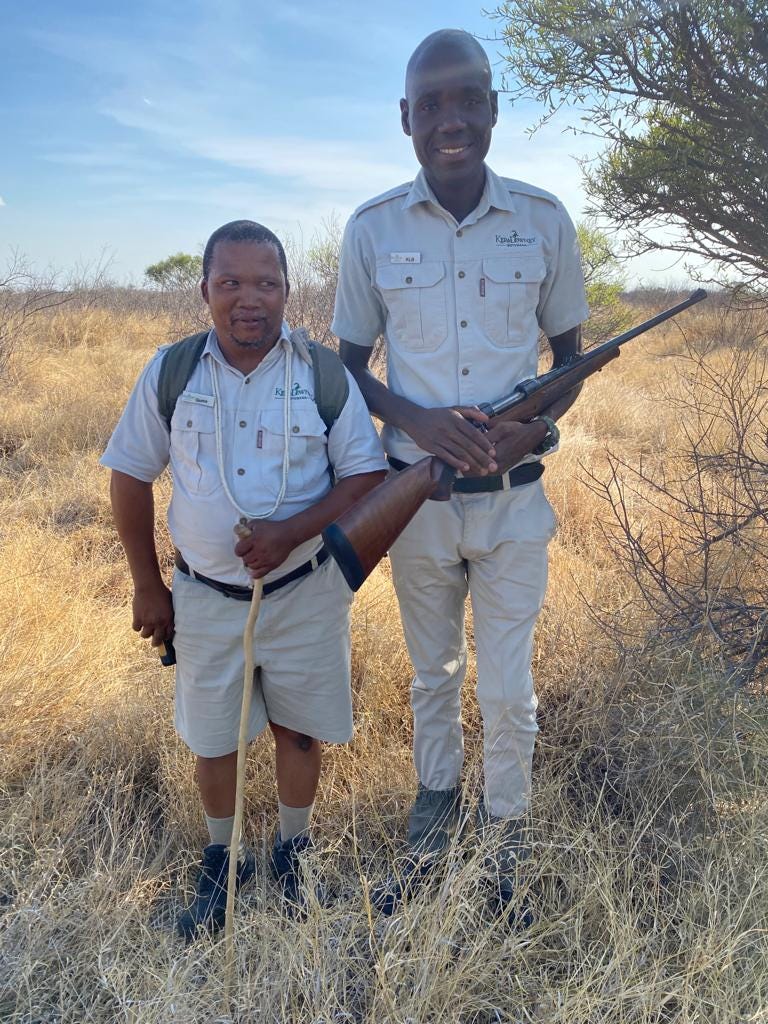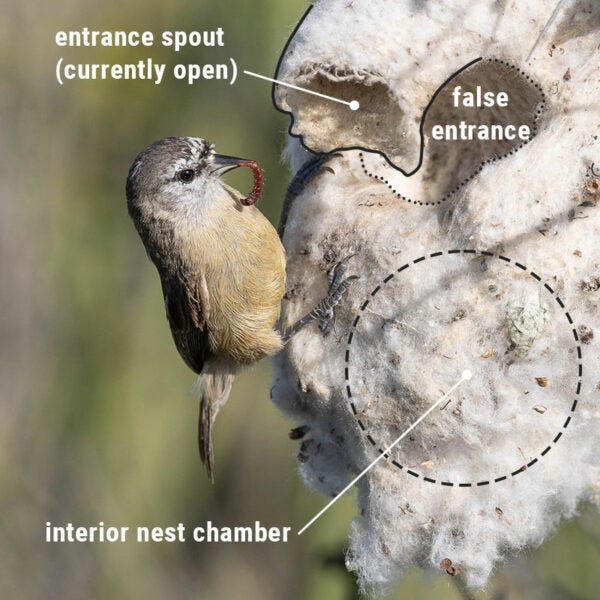Create or Perish
How Qume and the Cape Penduline Tit taught me that 'create or perish' is the eternal mandate of nature
Hello, this is Waterhole Wednesday
“YOU, like all others, are seeking the joy of living. You wish to be needed, to be loved to be included in the great drama of life. This urge is in every individual. It is in everything. The rose exists to express beauty. Root and branch conspire with nature to give birth to blossom. When moisture is precipitated the desert receives it with gladness and breaks forth into a song of creation. Making the most of its brief season, it blossoms in joy, storing within its bosom the seed of a future flowering. It is impossible to escape this creative urge.
In some way which you know not of, through some process which never reveals its face, Life has entered into you and with it the irresistible impulse to create. Divine Intelligence has willed it so, nor you, nor any other person, nor all the wit, science or philosophy of man, nor the inspiration of saints or sages, can change one bit of it any more than man can arrest the eternal circuits of time, the revolutions of the planets or the desire of the fledgling to leave its nest, to soar and sing.
Create or perish is the eternal mandate of nature. Be constructive or become frustrated, is an equal demand. You cannot escape the conclusion that whatever this thing is which is seeking expression through everything, it can find satisfactory outlet only through constructive and life-giving creativeness.” Ernest Holmes
Today I want to recount one of several intriguing experiences encountered last November during a walking tour through the Central Kalahari Desert with Bushman tracker Qume and Ranger Kealeboga. Qume was there to educate us, Kealeboga to protect us from wild animals like lions, cheetahs, leopards, and rhino.
Qume was born and grew up in Deception Valley, deep in the Central Kalahari, Botswana. He is shy (you can see that in the photo) and reserved, but passionate to teach the lessons our ancestors long forgot when they left Africa many thousands of years ago.
“Come, look!” exclaimed Qume as he darted towards a dry and thorny bush, pointing his home-made walking stick at a low-lying branch. We shuffled behind, not having the energy to do much more. It was 4pm and the temperature was still 38 degrees C (100 degrees F).
Shielding our eyes from the blazing sun, we crouched down and saw something fluffy hanging from a thorny branch about a metre from the ground. A pale-coloured ball of cotton. Oval-shaped and about the size of a fist.
“A spider’s nest?” I asked.
Qume giggled shyly and shook his head. “No, it’s an abandoned penduline tit’s nest. They are one of the smallest of all our birds, measuring 10cm (4 inches) and weighing only 8 grams (0.018 pounds). They lay 4-7 eggs at daily intervals and these eggs are tiny: 14x9mm (0.55” x 0.35”). After about 20 days, the chicks take flight, and if the vibe is right, the breeding pair may give it another shot.”
Picture this: the first-gen chicks chilling with the second-gen chicks and unhatched eggs in the nest at night. Talk about a family that sticks together!
Having made sure that we were safe from predators, Kealeboga joined the conversation.
“See that? he asked, pointing the tip of his rifle towards a large entrance hole on one side of the nest.
“That’s a false entrance they create to ward off predators like snakes and other birds. The real entrance is a slim tube that can be sealed tight. The bird lands, then hangs from the edge of the fake entrance while it uses its bill and other foot to unlatch the true entrance to the nest. This entrance is only opened for a fraction of a second and then closed again from the inside. When it's time to make an exit and the spout's mouth doesn’t close automatically, the clever penduline tit either zips it up with its bill or casually pushes it shut with its head. Everyone is safe inside while the snake stares gloomily at the empty fake nest above. It’s creation at its best.”
Because the nest was abandoned, we were given a chance to touch and feel its unique texture. Simultaneously robust and soft, it felt like sheep's wool but with a denser quality.
“Can you feel the mix of toughness and softness?” Qume asked. “That’s because it’s made from carefully chosen plant fibres, animal fur, and a sprinkle of spider genius. Renowned for their tensile strength, spider webs not only add durability but also contribute to binding the nest together effectively. This nest not only withstands the test of time, but also feels like a cozy masterpiece.”
Walking back to the game vehicle, the sun setting up ahead, I pondered the words “create or perish”.
“It’s not just a quote,” I thought. “It’s the penduline tit’s battle cry in this wild arena. These nests aren’t just their homes - they are survival stories etched in spider silk and resilience. In the face of nature’s challenges, they create a sturdy deceptive abode as a testament to the unwavering spirit that compels creation.”
The lesson for us here? Next time life hands you twigs, feathers, and challenges, channel your inner tit and create your masterpiece - or face the perils of the perch!
‘Safari Njema’ until next time when I’ll share a way to escape those creative roadblocks that keep us stuck.






Welcome to Substack and congratulations on your first newsletter issue, Avril. I'm really looking forward to reading more from you and seeing these beautiful images. Great idea with the weekly Wednesday rhythm.
Interesting read!